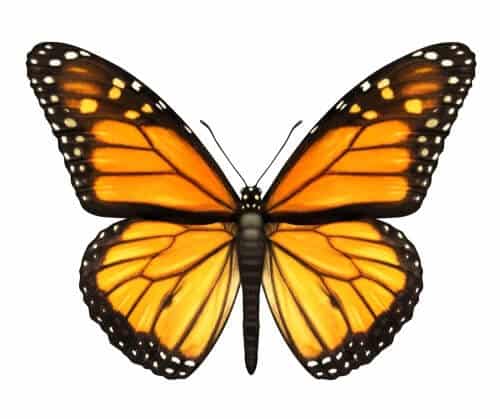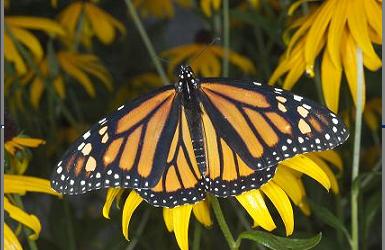Monarch butterflies have managed for thousands of years to navigate their way to a distance of about 4,800 kilometers each autumn from Canada to Mexico and back

While the in-car navigation system is a relatively new invention and still expensive, monarch butterflies have managed for thousands of years to navigate their way about 4,800 miles each fall from Canada to Mexico (and back in the spring) without losing their way. The phenomenon of seasonal migration is known from the world of birds, but most insects are too small and weak to migrate long distances. The precise navigational ability of the butterflies is admirable because it turns out that unlike birds that fly the migration route back and forth several times, each monarch butterfly makes this path only once in its life. How do monarch butterflies do it?
The mystery surrounding the mechanisms involved in this unusual phenomenon was solved by a team of researchers, among them the Israeli researcher Dr. Oren Froy, currently at the Faculty of Agriculture, Food and Environmental Sciences at the Hebrew University of Jerusalem. The research team was headed by Prof. Stephen Reffert from the University of Massachusetts Medical School. The team included other researchers from the Czech Academy of Sciences and the University of California, Irvine.
The researchers examined the butterfly's tiny brain and eye tissue to reveal new insights into the biological mechanism that guides this delicate creature on its long flight path. The research findings were recently published in an issue of the journal Neuron, as a follow-up to an article published in the prestigious journal Science about two years ago.
It is known that light is essential for the functioning of the "biological clock" in the butterfly's brain because it controls the metabolism and the "signal" to migrate. In the study, the researchers discovered that the ultraviolet light beam is especially essential for the butterfly's sense of orientation, because the butterfly's eyes have special light receptors that are sensitive to ultraviolet radiation and are responsible for the butterfly's sense of orientation. The proof that ultraviolet rays are essential for flight was done by placing the butterflies in a "flight" simulator. When the researchers installed an ultraviolet filter in the simulator, the butterflies stopped flying.
Researchers have discovered how butterflies fly thousands of kilometers
The researchers concluded that using its biological clock, the butterfly calculates its relative position and the angle it needs to take from the sun to continue flying south. But the question still remains: how is the connection made between the absorption of ultraviolet light and the biological clock?
This question was resolved in another experiment which revealed that there is a neural connection between the ultraviolet light receptors in the butterfly's eye used for navigation and the butterfly's biological clock. This connection allows the butterfly to both fly and to know in which direction it is flying. The information fed from the two interrelated systems - a system in the eye that detects ultraviolet radiation and the biological clock in the brain - directs the butterfly along thousands of kilometers on its way to its destination during the migration season.

